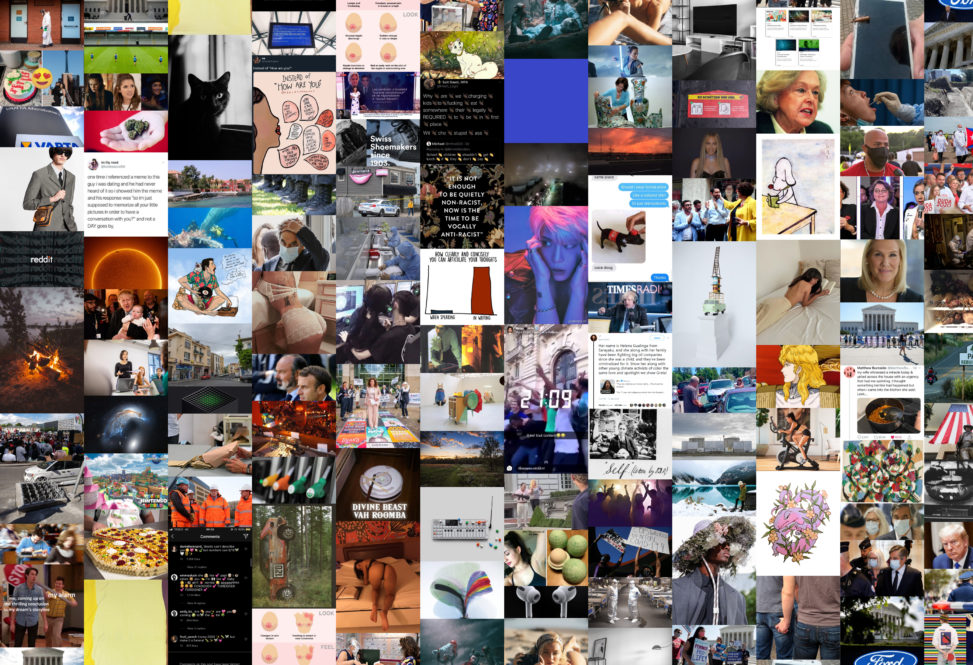GridFlow @ noemata.net
An online exhibition series thematizing documentation, conservation, (false) memory, (art) object, phenomenology, and blockchain certification.
Summer 2020 collection
There are 58 works from 50 artists submitted between April and June 2020.
Participating artists
Kristin Anderson, Bruce Barber, Domenico Barra, Aad Björkro, Rafael Bresciani, Tyler Calkin, Qianxun Chen, d_d Games, Alvar Danielsen, Reynald Drouhin, Paul Groch Frazier, Benna Gaean Maris, Hassan Harvey, @henridegrasse, Max Herman, James A Hutchinson, Danielle Imara, Nivard Jorissen, Timo Kahlen, Michelle Koenig, Tyrone Kunkle, Alex Lagueux, Carme Loupton, Bjørn Magnhildøen, Felix Maurer, Brüno Melo, Nick Montfort, Gilberto Morgan May, Gabby Patterson, Simon Perathoner, klaus pinter, Tija Place, Max « Cory » Poplar, poroku, Stefanie Reling-Burns, Michael Ridge, Oscar Ruiz Altamirano, Emile Schleich, Nina Sobell, Alan Sondheim and Sandy Baldwin, Elle Thorkveld, Patricia Tolbert, andrew topel, A. P. Vague, Paul Wiegerinck, Brent Wiley, William Wolfgang Wunderbar, Hussel Zoo, zsolt, and [anonymous].
An online exhibition series thematizing documentation, conservation, (false) memory, (art) object, phenomenology, and blockchain certification.
The Summer 2020 exhibition is ready, containing 58 works from 50+ artists.
The theme for the edition is ‘undocumentable’.
A lot of wonderful, inquisitive, thought-provoking works, none mentioned, non forgotten!
URL: https://noemata.net/ueop/2-20.php
Participating artists
Kristin Anderson, Bruce Barber, Domenico Barra, Aad Björkro, Rafael Bresciani, Tyler Calkin, Qianxun Chen, d_d Games, Alvar Danielsen, Reynald Drouhin, Paul Groch Frazier, Benna Gaean Maris, Hassan Harvey, @henridegrasse, Max Herman, James A Hutchinson, Danielle Imara, Nivard Jorissen, Timo Kahlen, Michelle Koenig, Tyrone Kunkle, Alex Lagueux, Carme Loupton, Bjørn Magnhildøen, Felix Maurer, Brüno Melo, Nick Montfort, Gilberto Morgan May, Gabby Patterson, Simon Perathoner, klaus pinter, Tija Place, Max « Cory » Poplar, poroku, Stefanie Reling-Burns, Michael Ridge, Oscar Ruiz Altamirano, Emile Schleich, Nina Sobell, Alan Sondheim and Sandy Baldwin, Elle Thorkveld, Patricia Tolbert, andrew topel, A. P. Vague, Paul Wiegerinck, Brent Wiley, William Wolfgang Wunderbar, Hussel Zoo, zsolt, and [anonymous].
Curatorial notes
Documentation and mediation of art are central and have been the subject of debate throughout the past century, especially with regard to the dematerialisation of art in the 1960s and prior, via conceptual art in variants, in various attempts to combat the commodification of art and the art object itself. It may be a challenge not to document and preserve online art, just as much as it would be to delete it.The purpose of this call is to investigate art and internet art as documented, non-documented, non-documentable.
Object permanence: where a we learn that an object continues to exist even though we don’t perceive it in any way. False memories: it’s surprisingly easy to manipulate memory, and that the media plays the role of a false servant in that a mediation of an experience causes one to remember the mediation while distorting and forgetting the experience itself. A mediation of an art object can thus be seen as the opposite of an object permancence: We learrn we can continue to perceive it though it doesn’t exist in any way. The object disappears and no longer exists for the people who sense it, while it continues to exist for those who don’t sense it.
Research suggests that the feeling of having something ‘on the tip of the tongue’ may be quite precise, ie. it would indicate that the memory exists and that it’s not false. This could be understood in information technology analogous to a cryptographic hash function. The function can be utilized to verify that an object exists and is correct without having access to the object itself.
Once we know how our experiences are shaped and distorted via cognition, memory, media, and documentation, the more important it is that art allows and encouraged experimentation conveying an experienced reality, eg. through a phenomenological approach, as an exploration and analysis of an object-as-experienced using new technology for a ‘tip of the tongue’ documentation/verification. The point has been to provide ways of documenting something without mediating it, that we can get understand that something is the case without being able to perceive or experience it.
The exhibition is notarized and certified on the bitcoin blockchain with the hash key of the zip of the collection embedded in the transaction. It means there’s a public stamp referring to it, a proof-of-existence, since the hash-key is unique. So, the undocumented events and objects of the collection are then nonetheless proven to exist, which was partly the point, to assert an existence of the otherwise non-documented and non-documentable. In various degrees the works reflect this. In other words, blockchain is used as an archive, museum or a similar function for conservation of works, but without containing or revealing them – its only function is to certify their existence when asked.

